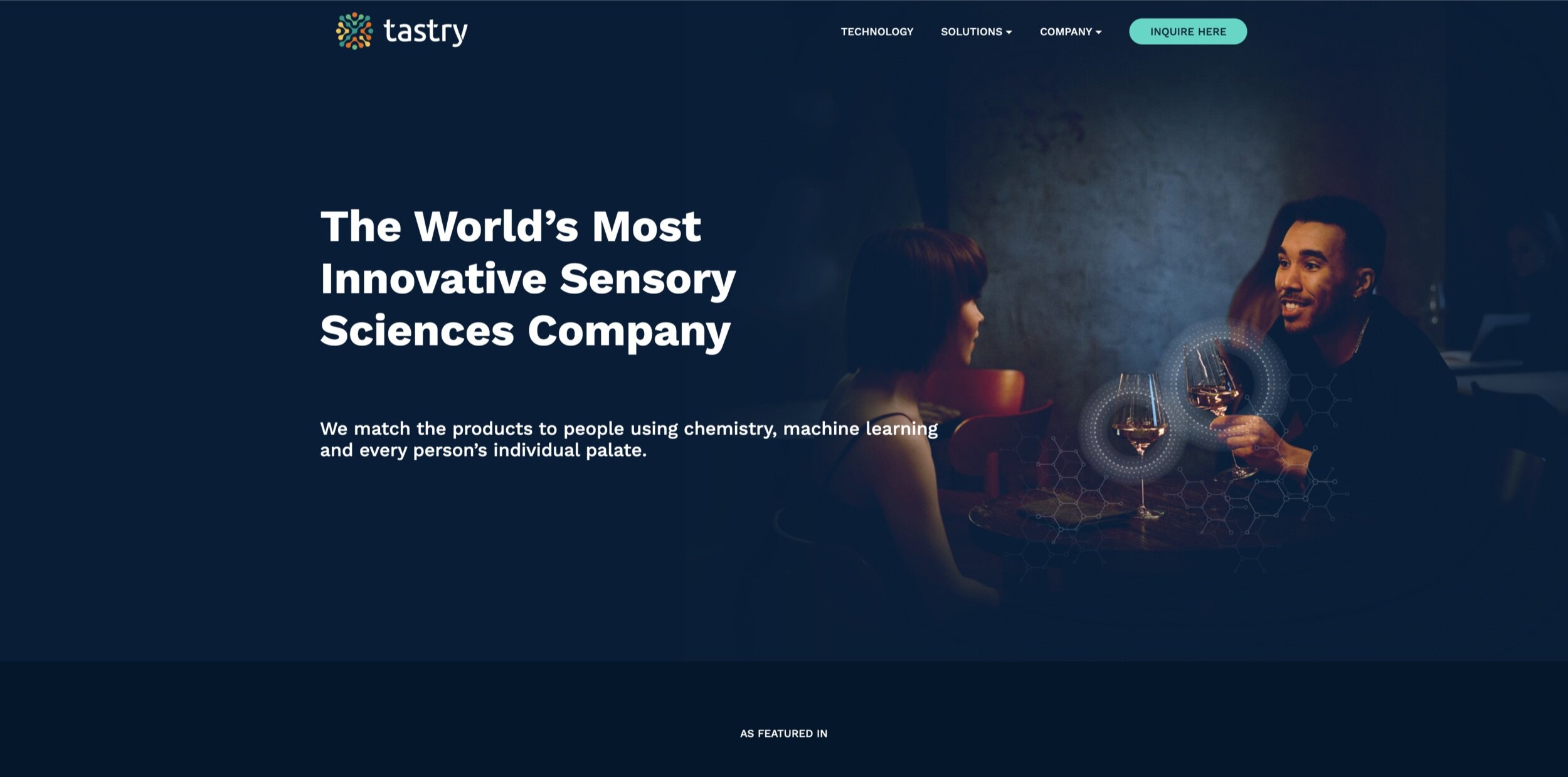For 9,000 Years, the Process of Winemaking has Stayed the Same. Tastry's AI Tech is About to Change That
In WineBusines.com
“Since 4,000 BCE, the process of winemaking has largely stayed true to its romantic origins. Swaths of green valleys and majestic rolling hills in beautiful balmy regions like Tuscany, California, or Bordeaux give way to grapes which are harvested, destemmed and sorted before being crushed and pressed. Yeast is introduced to the mixture, and the juice is fermented and aged until the desired flavor and alcohol content is reached. After the wine is produced and bottled, it is stocked on shelves and ultimately immersed into our daily lives.
A brief perusal of a winery will likely take your breath away — From the scenic views of the vineyards to the rugged tasting rooms that house barrels of wine yet to be bottled and shipped off. The magic lies in the traditions cultivated over thousands and thousands of years, the intricacies of production and the hours of work that goes into manufacturing practices.
However, winemaking is an expensive endeavour, and winemakers are continuously compelled to gamble on which blends will perform well in the market.
Tastry, a sensory sciences company that uses advanced chemistry, machine learning and artificial intelligence to match consumers with wines they will love, provides visibility into the consumer market, unlike any other technology. After TastryAI analyzes the chemistry of a wine, it compares the flavor, aroma, texture, and color of that wine to all of the palates of individual consumers who have received recommendations either directly from Tastry or any one of their many retail partners. Within seconds, Tastry can predict how that product will be rated by each of those consumers; and when aggregated, TastryAI can predict how that product will compete in the market from a flavor perspective.
Katerina Axelsson, the founder and CEO, worked as a chemist at a custom crush facility in California to pay her way through a chemistry degree at Cal Poly. While in the lab, she noticed the same batches of wine would often be bottled under different labels, then scored differently by the same wine critics. This begs the questions further — How can a consumer rely on a system in which a critic can rate the same wine 87pts and 92pts?.
“I saw an opportunity to develop novel chemistry methods to evaluate the flavor, aroma, texture, and color of wine in the same way our human biology does. After years of late nights and long weekends, I ended up with a very compelling dataset,” said Axelsson. “I was convinced it would help manufacturers, distributors, and retailers, but most of all, it would help consumers to find the wines they would love. The only problem was, the data was far too complex to be processed manually.”
Looking for guidance, she booked a 30-minute meeting with her computer science professor, which quickly grew into a four-hour crash brainstorm with fellow professors joining in. Tastry evolved from the core concepts that were envisioned that day to become the only company in the world to teach a computer how to taste.
“We particularly love working with winemakers because they are by nature artists and are constantly exploring interesting blends and creative aging and fining techniques,” said Axelsson. “Whether building a high-end reserve for their club, or a mass-market wine for grocery, TastryAI allows them to test their performance before they commit to bottling.”
Tastry is the first company in the world to develop revolutionary artificial intelligence and analytical chemistry methods to predict how sensory-based products (i.e. wine, beer, spirits, beverages, fragrances, coffee, etc.) will be perceived by consumers and perform in the market before they hit the shelves. The result? They are rapidly democratizing purchasing and selling wine to help wineries grow, keep more money in the consumers’ pocket, and provide wine lovers with their favourite wine, every time. In a recent test with a large conglomerate, Tastry’s patented recommendation process predicted consumer product scores with over 92% accuracy.
“The accuracy of TastryAI is made possible by our proprietary analytical and flavor chemistry analysis methods and our singularized information-based algorithms. We don’t use collaborative filtering and never bin people, or wine, into categories. We look at each wine and person individually and then aggregate those data to provide general insight,” Axelsson explains.
With Tastry, wineries know what to make, how to make it and where to sell it. On the consumer side, Tastry matches each person with personalized wine recommendations validated through AI sensory technology, something that has never been done before. Through Tastry, the world of wine is changing as we know it.
“One of the biggest challenges to small and medium-size wineries is convincing an online consumer to risk purchasing an unknown wine, but retailers that deploy the Tastry Recommender, and the consumers who use it, can buy with confidence,” she said. “My greatest expectation is that TastryAI will be a huge asset to our winery partners as they continue to expand into the DTC market.””
To learn more about Tastry, visit: https://tastry.com/
Website:https://tastry.com/


